Wag The Dog — How Al Qaeda Played Donald Trump And The American Media
Responsibility for the chemical event in Khan Sheikhoun is still very much in question.
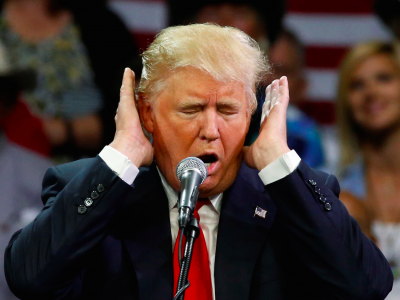
Once upon a time, Donald J. Trump, the New York City businessman-turned-president, berated then-President Barack Obama back in September 2013 about the fallacy of an American military strike against Syria. At that time, the United States was considering the use of force against Syria in response to allegations (since largely disproven) that the regime of President Bashar al-Assad had used chemical weapons against civilians in the Damascus suburb of Ghouta. Trump, via tweet, declared “to our very foolish leader, do not attack Syria – if you do many very bad things will happen & from that fight the U.S. gets nothing!”
President Obama, despite having publicly declaring the use of chemical weapons by the Syrian regime a “red line” which, if crossed, would demand American military action, ultimately declined to order an attack, largely on the basis of warnings by James Clapper, the Director of National Intelligence, that the intelligence linking the chemical attack on Ghouta was less than definitive.
President Barack Obama, in a 2016 interview with The Atlantic, observed,

“there’s a playbook in Washington that presidents are supposed to follow. It’s a playbook that comes out of the foreign-policy establishment. And the playbook prescribes responses to different events, and these responses tend to be militarized responses.” While the “Washington playbook,” Obama noted, could be useful during times of crisis, it could “also be a trap that can lead to bad decisions.”
His “red line” on chemical weapons usage, combined with heated rhetoric coming from his closest advisors, including Secretary of State John Kerry, hinting at a military response, was such a trap. Ultimately, President Obama opted to back off, observing that “dropping bombs on someone to prove that you’re willing to drop bombs on someone is just about the worst reason to use force.” The media, Republicans and even members of his own party excoriated Obama for this decision.
Yet, in November 2016, as president-elect, Donald Trump doubled down on Obama’s eschewing of the “Washington playbook.” The situation on the ground in Syria had fundamentally changed since 2013; the Islamic State in Iraq and Syria (ISIS) had taken over large swaths of territory in Iraq and Syria, establishing a “capital” in the Syrian city of Raqqa and declaring the creation of an Islamic “Caliphate.” American efforts to remove Syrian President Assad from power had begun to bar fruit, forcing Russia to intervene in September 2015 in order to prop up the beleaguered Syrian president.
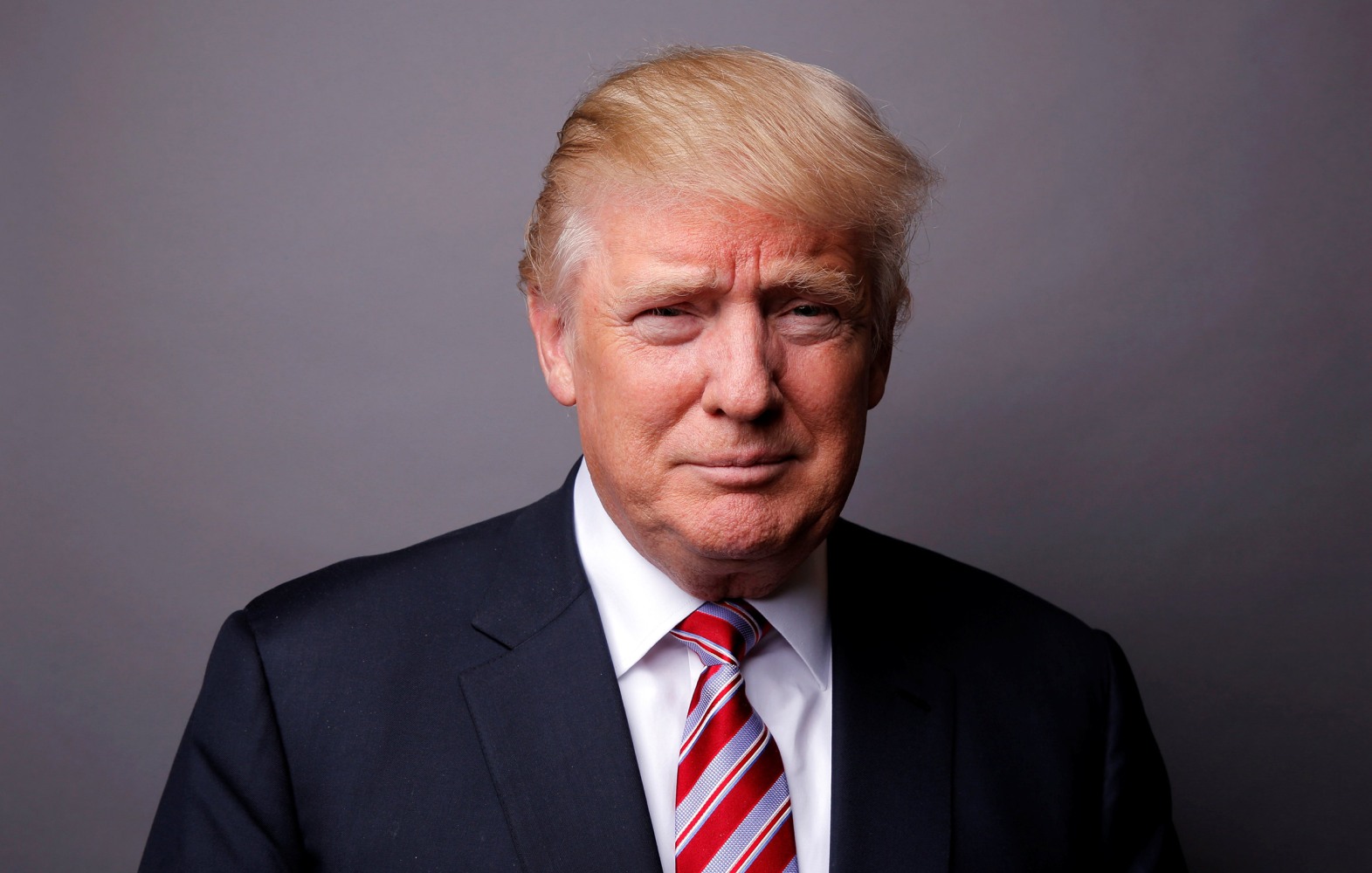 Trump, breaking from the mainstream positions held by most American policy makers, Republican and Democrat alike, declared that the United States should focus on fighting and defeating the Islamic State (ISIS) and not pursuing regime change in Syria.
Trump, breaking from the mainstream positions held by most American policy makers, Republican and Democrat alike, declared that the United States should focus on fighting and defeating the Islamic State (ISIS) and not pursuing regime change in Syria.
“My attitude,” Trump noted, “was you’re fighting Syria, Syria is fighting ISIS, and you have to get rid of ISIS. Russia is now totally aligned with Syria, and now you have Iran, which is becoming powerful, because of us, is aligned with Syria… Now we’re backing rebels against Syria, and we have no idea who these people are.” Moreover, Trump observed, given the robust Russian presence inside Syria, if the United States attacked Assad, “we end up fighting Russia, fighting Syria.”
For more than two months, the new Trump administration seemed to breathe life into the notion that Donald Trump had, like his predecessor before him, thrown the “Washington playbook” out the window when it came to Syrian policy. After ordering a series of new military deployments into Syria and Iraq specifically designed to confront ISIS, the Trump administration began to give public voice to a major shift in policy vis-à-vis the Syrian President.
For the first time since President Obama, in August 2011, articulated regime change in Damascus as a precondition for the cessation of the civil conflict that had been raging since April 2011, American government officials articulated that this was no longer the case.
“You pick and choose your battles,” the American Ambassador to the United Nations, Nikki Haley, told reporters on March 30, 2017. “And when we’re looking at this, it’s about changing up priorities and our priority is no longer to sit and focus on getting Assad out.”
Haley’s words were echoed by Secretary of State Rex Tillerson, who observed that same day, while on an official visit to Turkey,
“I think the… longer-term status of President Assad will be decided by the Syrian people.”
This new policy direction lasted barely five days. Sometime in the early afternoon of April 4, 2017, troubling images and video clips began to be transmitted out of the Syrian province of Idlib by anti-government activists, including members of the so-called “White Helmets,” a volunteer rescue team whose work was captured in an eponymously-named Academy Award-winning documentary film. These images showed victims in various stages of symptomatic distress, including death, from what the activists said was exposure to chemical weapons dropped by the Syrian air force on the town of Khan Sheikhoun that very morning.
Images of these tragic deaths were immediately broadcast on American media outlets, with pundits decrying the horrific and heinous nature of the chemical attack, which was nearly unanimously attributed to the Syrian government, even though the only evidence provided was the imagery and testimony of the anti-Assad activists who, just days before, were decrying the shift in American policy regarding regime change in Syria. President Trump viewed these images, and was deeply troubled by what he saw, especially the depictions of dead and suffering children.
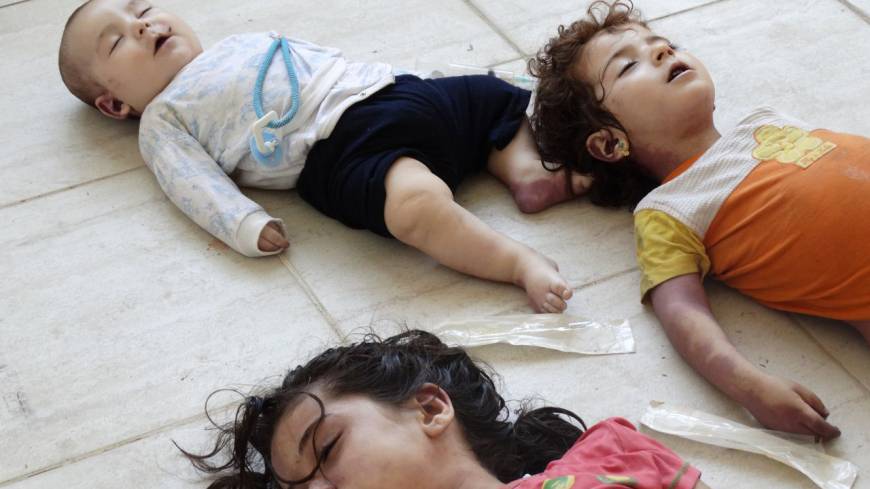
The images were used as exhibits in a passionate speech by Haley during a speech at the Security Council on April 5, 2017, where she confronted Russia and threatened unilateral American military action if the Council failed to respond to the alleged Syrian chemical attack.
“Yesterday morning, we awoke to pictures, to children foaming at the mouth, suffering convulsions, being carried in the arms of desperate parents,” Haley said, holding up two examples of the images provided by the anti-Assad activists. “We saw rows of lifeless bodies, some still in diapers…we cannot close our eyes to those pictures. We cannot close our minds of the responsibility to act.” If the Security Council refused to take action against the Syrian government, Haley said, then “there are times in the life of states that we are compelled to take our own action.”
In 2013, President Barack Obama was confronted with images of dead and injured civilians, including numerous small children, from Syria that were every bit as heartbreaking as the ones displayed by Ambassador Haley. His Secretary of State, John Kerry, had made an impassioned speech that all but called for military force against Syria. President Obama asked for, and received, a wide-range of military options from his national security team targeting the regime of President Assad; only the intervention of James Clapper, and the doubts that existed about the veracity of the intelligence linking the Ghouta chemical attack to the Syrian government, held Obama back from giving the green light for the bombing to begin.
Like President Obama before him, President Trump asked for his national security team to prepare options for military action. Unlike his predecessor, Donald Trump did not seek a pause in his decision making process to let his intelligence services investigate what had actually occurred in Khan Sheikhoun. Like Nikki Haley, Donald Trump was driven by his visceral reaction to the imagery being disseminated by anti-Assad activists. In the afternoon of April 6, as he prepared to depart the White House for a summit meeting with a delegation led by the Chinese President Xi Jinping, Trump’s own cryptic words in response to a reporter’s question about any American response seem to hint that his mind was already made up. “You’ll see,” he said, before walking away.
Within hours, a pair of U.S. Navy destroyers launched 59 advanced Block IV Tomahawk cruise missiles (at a cost of some $1.41 million each), targeting aircraft, hardened shelters, fuel storage, munitions supply, air defense and communications facilities at the Al Shayrat air base, located in central Syria. Al Shayrat was home to two squadrons of Russian-made SU-22 fighter-bombers operated by the Syrian air force, one of which was tracked by American radar as taking off from Al Sharyat on the morning of April 4, 2017, and was overhead Khan Sheikhoun around the time the alleged chemical attack occurred.
The purpose of the American strike was two-fold; first, to send a message to the Syrian government and its allies that, according to Secretary of State Tillerson,
“the president is willing to take decisive action when called for,” and in particular when confronted with evidence of a chemical attack from which the United States could not “turn away, turn a blind eye.”
The other purpose, according to a U.S. military spokesperson, to “reduce the Syrian government’s ability to deliver chemical weapons.”
Moreover, the policy honeymoon the Trump administration had only recently announced about regime change in Syria was over.
“It’s very, very possible, and, I will tell you, it’s already happened, that my attitude toward Syria and Assad has changed very much,”
President Trump told reporters before the missile strikes had commenced. Secretary Tillerson went further:
“It would seem there would be no role for him [Assad] to govern the Syrian people.”
Such a reversal in policy fundamentals and direction in such a short period of time is stunning; Donald Trump didn’t simply deviate slightly off course, but rather did a complete 180-degree turn. The previous policy of avoiding entanglement in the internal affairs of Syria in favor of defeating ISIS and improving relations with Russia had been replaced by a fervent embrace of regime change, direct military engagement with the Syrian armed forces, and a confrontational stance vis-à-vis the Russian military presence in Syria.
Normally, such major policy change could only be explained by a new reality driven by verifiable facts. The alleged chemical weapons attack against Khan Sheikhoun was not a new reality; chemical attacks had been occurring inside Syria on a regular basis, despite the international effort to disarm Syria’s chemical weapons capability undertaken in 2013 that played a central role in forestalling American military action at that time. International investigations of these attacks produced mixed results, with some being attributed to the Syrian government (something the Syrian government vehemently denies), and the majority being attributed to anti-regime fighters, in particular those affiliated with Al Nusra Front, an Al Qaeda affiliate.
Moreover, there exists a mixed provenance when it comes to chemical weapons usage inside Syria that would seem to foreclose any knee-jerk reaction that placed the blame for what happened at Khan Sheikhoun solely on the Syrian government void of any official investigation. Yet this is precisely what occurred. Some sort of chemical event took place in Khan Sheikhoun; what is very much in question is who is responsible for the release of the chemicals that caused the deaths of so many civilians.
No one disputes the fact that a Syrian air force SU-22 fighter-bomber conducted a bombing mission against a target in Khan Sheikhoun on the morning of April 4, 2017. The anti-regime activists in Khan Sheikhoun, however, have painted a narrative that has the Syrian air force dropping chemical bombs on a sleeping civilian population.
A critical piece of information that has largely escaped the reporting in the mainstream media is that Khan Sheikhoun is ground zero for the Islamic jihadists who have been at the center of the anti-Assad movement in Syria since 2011. Up until February 2017, Khan Sheikhoun was occupied by a pro-ISIS group known as Liwa al-Aqsa that was engaged in an oftentimes-violent struggle with its competitor organization, Al Nusra Front (which later morphed into Tahrir al-Sham, but under any name functioning as Al Qaeda’s arm in Syria) for resources and political influence among the local population.

The Russian Ministry of Defense has claimed that Liwa al-Aqsa was using facilities in and around Khan Sheikhoun to manufacture crude chemical shells and landmines intended for ISIS forces fighting in Iraq. According to the Russians the Khan Sheikhoun chemical weapons facility was mirrored on similar sites uncovered by Russian and Syrian forces following the reoccupation of rebel-controlled areas of Aleppo.
In Aleppo, the Russians discovered crude weapons production laboratories that filled mortar shells and landmines with a mix of chlorine gas and white phosphorus; after a thorough forensic investigation was conducted by military specialists, the Russians turned over samples of these weapons, together with soil samples from areas struck by weapons produced in these laboratories, to investigators from the Organization for the Prohibition of Chemical Weapons for further evaluation.
Al Nusra has a long history of manufacturing and employing crude chemical weapons; the 2013 chemical attack on Ghouta made use of low-grade Sarin nerve agent locally synthesized, while attacks in and around Aleppo in 2016 made use of a chlorine/white phosphorous blend. If the Russians are correct, and the building bombed in Khan Sheikhoun on the morning of April 4, 2017 was producing and/or storing chemical weapons, the probability that viable agent and other toxic contaminants were dispersed into the surrounding neighborhood, and further disseminated by the prevailing wind, is high.
The counter-narrative offered by the Russians and Syrians, however, has been minimized, mocked and ignored by both the American media and the Trump administration. So, too, has the very illogic of the premise being put forward to answer the question of why President Assad would risk everything by using chemical weapons against a target of zero military value, at a time when the strategic balance of power had shifted strongly in his favor. Likewise, why would Russia, which had invested considerable political capital in the disarmament of Syria’s chemical weapons capability after 2013, stand by idly while the Syrian air force carried out such an attack, especially when their was such a heavy Russian military presence at the base in question at the time of the attack?
Such analysis seems beyond the scope and comprehension of the American fourth estate. Instead, media outlets like CNN embrace at face value anything they are told by official American sources, including a particularly preposterous insinuation that Russia actually colluded in the chemical weapons attack; the aforementioned presence of Russian officers at Al Shayrat air base has been cited as evidence that Russia had to have known about Syria’s chemical warfare capability, and yet did nothing to prevent the attack.
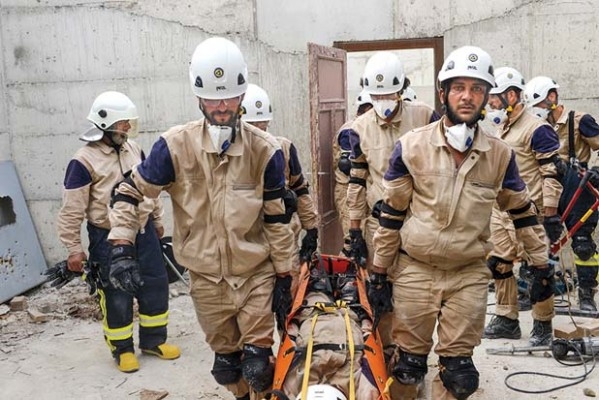
To sustain this illogic, the American public and decision-makers make use of a sophisticated propaganda campaign involving video images and narratives provided by forces opposed to the regime of Bashar al-Assad, including organizations like the “White Helmets,” the Syrian-American Medical Society, the Aleppo Media Center, which have a history of providing slanted information designed to promote an anti-Assad message (Donald Trump has all but acknowledged that these images played a major role in his decision to reevaluate his opinion of Bashar al-Assad and order the cruise missile attack on Al Shayrat airbase.)
Many of the fighters affiliated with Tahrir al-Sham are veterans of the battle for Aleppo, and as such are intimately familiar with the tools and trade of the extensive propaganda battle that was waged simultaneously with the actual fighting in an effort to sway western public opinion toward adopting a more aggressive stance in opposition to the Syrian government of Assad. These tools were brought to bear in promoting a counter-narrative about the Khan Sheikhoun chemical incident (ironically, many of the activists in question, including the “White Helmets,” were trained and equipped in social media manipulation tactics using money provided by the United States; that these techniques would end up being used to manipulate an American President into carrying out an act of war most likely never factored into the thinking of the State Department personnel who conceived and implemented the program).
Even slick media training, however, cannot gloss over basic factual inconsistencies. Early on, the anti-Assad opposition media outlets were labeling the Khan Sheikhoun incident as a “Sarin nerve agent” attack; one doctor affiliated with Al Qaeda sent out images and commentary via social media that documented symptoms, such as dilated pupils, that he diagnosed as stemming from exposure to Sarin nerve agent. Sarin, however, is an odorless, colorless material, dispersed as either a liquid or vapor; eyewitnesses speak of a “pungent odor” and “blue-yellow” clouds, more indicative of chlorine gas.
And while American media outlets, such as CNN, have spoken of munitions “filled to the brim” with Sarin nerve agent being used at Khan Sheikhoun, there is simply no evidence cited by any source that can sustain such an account. Heartbreaking images of victims being treated by “White Helmet” rescuers have been cited as proof of Sarin-like symptoms, the medical viability of these images is in question; there are no images taken of victims at the scene of the attack. Instead, the video provided by the “White Helmets” is of decontamination and treatment carried out at a “White Helmet” base after the victims, either dead or injured, were transported there.
The lack of viable protective clothing worn by the “White Helmet” personnel while handling victims is another indication that the chemical in question was not military grade Sarin; if it were, the rescuers would themselves have become victims (some accounts speak of just this phenomena, but this occurred at the site of the attack, where the rescuers were overcome by a “pungent smelling” chemical – again, Sarin is odorless.)
More than 20 victims of the Khan Sheikhoun incident were transported to Turkish hospitals for care; three subsequently died. According to the Turkish Justice Minister, autopsies conducted on the bodies confirm that the cause of death was exposure to chemical agents. The World Health Organization has indicated that the symptoms of the Khan Sheikhoun victims are consistent with both Sarin and Chlorine exposure. American media outlets have latched onto the Turkish and WHO statements as “proof” of Syrian government involvement; however, any exposure to the chlorine/white phosphorous blend associated with Al Nusra chemical weapons would produce similar symptoms.
Moreover, if Al Nusra was replicating the type of low-grade Sarin it employed at Ghouta in 2013 at Khan Sheikhoun, it is highly likely that some of the victims in question would exhibit Sarin-like symptoms. Blood samples taken from the victims could provide a more precise readout of the specific chemical exposure involved; such samples have allegedly been collected by Al Nusra-affiliated personnel, and turned over to international investigators (the notion that any serious investigatory body would allow Al Nusra to provide forensic evidence in support of an investigation where it is one of only two potential culprits is mindboggling, but that is precisely what has happened). But the Trump administration chose to act before these samples could be processed, perhaps afraid that their results would not sustain the underlying allegation of the employment of Sarin by the Syrian air force.
Mainstream American media outlets have willingly and openly embraced a narrative provided by Al Qaeda affiliates whose record of using chemical weapons in Syria and distorting and manufacturing “evidence” to promote anti-Assad policies in the west, including regime change, is well documented. These outlets have made a deliberate decision to endorse the view of Al Qaeda over a narrative provided by Russian and Syrian government authorities without any effort to fact check either position. These actions, however, do not seem to shock the conscience of the American public; when it comes to Syria, the mainstream American media and its audience has long ago ceded the narrative to Al Qaeda and other Islamist anti-regime elements.
The real culprits here are the Trump administration, and President Trump himself. The president’s record of placing more weight on what he sees on television than the intelligence briefings he may or may not be getting, and his lack of intellectual curiosity and unfamiliarity with the nuances and complexities of both foreign and national security policy, created the conditions where the imagery of the Khan Sheikhoun victims that had been disseminated by pro-Al Nusra (i.e., Al Qaeda) outlets could influence critical life-or-death decisions.
That President Trump could be susceptible to such obvious manipulation is not surprising, given his predilection for counter-punching on Twitter for any perceived slight; that his national security team allowed him to be manipulated thus, and did nothing to sway Trump’s opinion or forestall action pending a thorough review of the facts, is scandalous. History will show that Donald Trump, his advisors and the American media were little more than willing dupes for Al Qaeda and its affiliates, whose manipulation of the Syrian narrative resulted in a major policy shift that furthers their objectives.
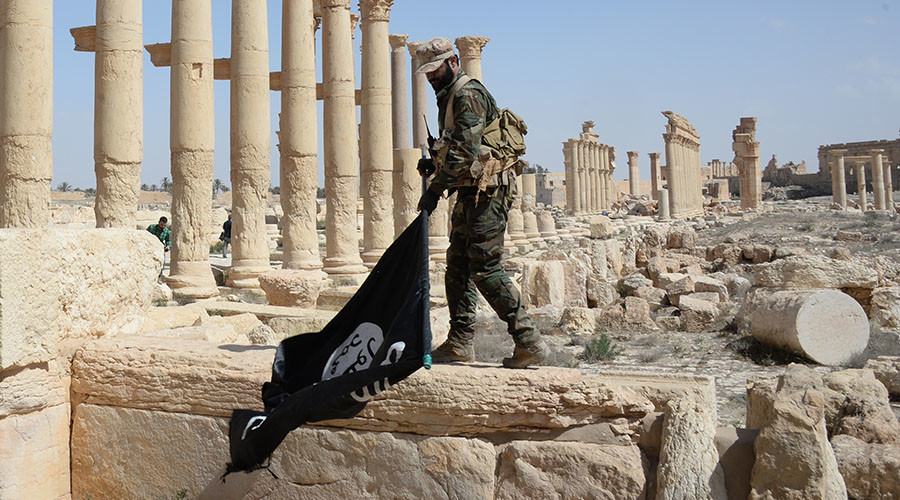 The other winner in this sorry story is ISIS, which took advantage of the American strike against Al Shayrat to launch a major offensive against Syrian government forces around the city of Palmyra (Al Shayrat had served as the principal air base for operations in the Palmyra region). The breakdown in relations between Russia and the United States means that, for the foreseeable future at least, the kind of coordination that had been taking place in the fight against ISIS is a thing of the past, a fact that can only bode well for the fighters of ISIS. For a man who placed so much emphasis on defeating ISIS, President Trump’s actions can only be viewed as a self-inflicted wound, a kind of circular firing squad that marks the actions of a Keystone Cop, and not the Commander in Chief of the most powerful nation in the world.
The other winner in this sorry story is ISIS, which took advantage of the American strike against Al Shayrat to launch a major offensive against Syrian government forces around the city of Palmyra (Al Shayrat had served as the principal air base for operations in the Palmyra region). The breakdown in relations between Russia and the United States means that, for the foreseeable future at least, the kind of coordination that had been taking place in the fight against ISIS is a thing of the past, a fact that can only bode well for the fighters of ISIS. For a man who placed so much emphasis on defeating ISIS, President Trump’s actions can only be viewed as a self-inflicted wound, a kind of circular firing squad that marks the actions of a Keystone Cop, and not the Commander in Chief of the most powerful nation in the world.
But the person who might get the last laugh is President Assad himself. While the Pentagon has claimed that it significantly degraded the Al Shayrat air base, with 58 of 59 cruise missile hitting their targets, Russia has stated that only 23 cruise missiles impacted the facility, and these did only limited damage. The runway was undamaged; indeed, in the afternoon of April 7, 2017, a Syrian air force fighter-bomber took off from Al Shayrat, flew to Idlib Province, where it attacked Al Nusra positions near Khan Sheikhoun.
William Scott Ritter Jr. was a United Nations weapons inspector in Iraq from 1991 to 1998, and later a critic of United States foreign policy in the Middle East. Prior to the invasion of Iraq in March 2003, Ritter stated that Iraq possessed no significant weapons of mass destruction (WMD) capabilities, becoming “the loudest and most credible skeptic of the Bush administration’s contention that Hussein was hiding weapons of mass destruction.”
Consult the archive of Scott Ritter’s articles on Global Research

